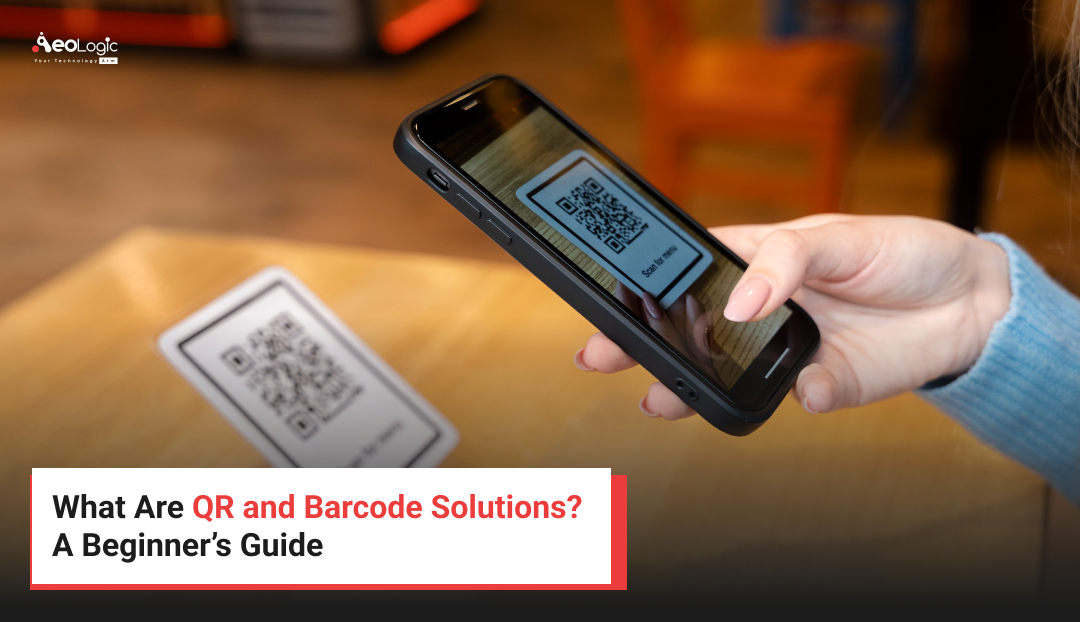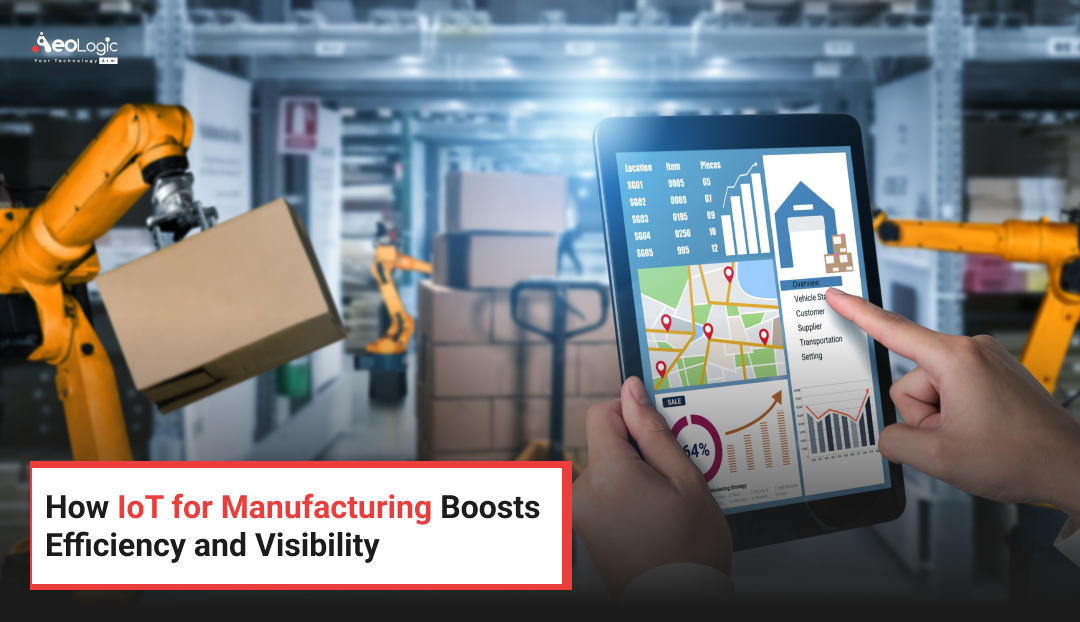Every day, we see small black lines on products or little square boxes with patterns. You might scan them at stores or with your phone. These small codes are not just random — they are a part of a smart system called QR and Barcode solutions.
But what are QR and barcode solutions exactly? Why do we see them everywhere — in shops, restaurants, delivery packages, and even advertisements?
In simple words, QR and barcode solutions are systems that help identify, store, and share information easily using printed codes. They are part of modern technology that makes data reading fast and accurate.
In this blog, we’ll learn everything about what are QR and barcode solutions, how they work, their types, benefits, and real examples in daily life. This is a complete beginner’s guide written in simple English.
What Are QR and Barcode Solutions?
QR and Barcode solutions are tools that use printed codes to store and transfer data in a quick and automatic way.
A barcode is made up of a series of black and white lines that can be read by scanners. It usually stores small information like product numbers or prices.
A QR code (Quick Response code) is a square-shaped pattern that can store more data, like website links, contact details, and even payments. QR codes can be scanned easily using smartphones.
So, when you use a barcode or QR code scanner, the system reads the code and shows the information instantly. These solutions help companies in tracking products, making payments, managing inventory, and even marketing.
In short, QR and barcode solutions are simple yet powerful tools that connect physical products with digital information.
Importance of QR and Barcode Solutions
Before these codes existed, companies had to record data manually. This took a lot of time and mistakes were common. But now, with QR and barcode systems, things have become much easier and faster.
Here’s why they are important:
-
Fast Data Reading – Just scan, and you get instant information.
-
No Human Error – Machines read data accurately every time.
-
Saves Time – You don’t have to type or search manually.
-
Cost-Effective – Printing codes is cheap compared to other technologies.
-
Easy to Use – Anyone can scan QR or barcodes using phones or simple devices.
-
Universal Use – Used in all industries like retail, logistics, healthcare, and marketing.
How QR and Barcode Solutions Work
Though it looks simple, there’s a small system behind every scan.
-
Data Encoding – Information like price, ID, or URL is converted into a code (barcode or QR).
-
Printing/Displaying – The code is printed on a label, product, or screen.
-
Scanning – A device like a barcode scanner or phone camera reads the code.
-
Decoding – The scanner decodes the pattern into readable data.
-
Action – The data is sent to a system to show price, open a website, or record an entry.
This process takes less than a second and is extremely accurate.
Main Components of QR and Barcode Solutions
Even though QR and barcode systems look simple, they have a few parts that work together to make scanning and data collection smooth.
Code or Label
This is the printed image you see — either a barcode with lines or a QR code with small black boxes. It stores data that can be read by scanners or mobile phones.
Scanning Device
This is the tool used to read the code.
-
In shops, it’s usually a barcode scanner.
-
For QR codes, your phone camera or a tablet can scan easily.
Software or Application
After the scanner reads the code, the information goes into a system or software. This software interprets the data — like showing the product price, product name, or a link.
Database or Storage
Every QR or barcode system connects with a database where the data is stored. For example, a retail database stores all item details connected with their barcodes.
Network Connection
Sometimes the system needs internet to sync data with other systems or servers. This helps in updating stock, prices, or tracking items in real time.
All these pieces work together so that scanning a small code gives instant and correct information.
Types of Barcodes
Barcodes come in different designs depending on how much data they can hold and what they are used for. Here are the main types in simple words:
1D (Linear) Barcodes
These are the traditional black and white lines you see on almost every product in a supermarket. They hold basic data like numbers or product codes.
2D Barcodes
These are more advanced. They can store more data, like text or links. Examples of 2D barcodes include QR codes and Data Matrix codes.
Linear barcodes are simple and fast, while 2D barcodes are more powerful and can hold more information in a small space.
Types of QR Codes
QR codes also have different kinds depending on their use.
Static QR Code
Once created, the data inside cannot be changed. It’s mostly used for basic info like contact numbers or website links.
Dynamic QR Code
The data can be edited anytime even after printing. These are useful for businesses because they can track scans and update links later.
Micro QR Code
A smaller version used where there is very little space, like on small products or tickets.
Frame QR Code
These are customizable QR codes that allow logos or small designs inside them. Many brands use these for marketing.
Real-Life Examples of QR and Barcode Solutions
QR and barcode technology is everywhere. You use it daily, maybe without even noticing it. Here are some easy examples.
Retail Stores
Almost every product in a shop has a barcode. Cashiers scan them to check prices and manage inventory.
Restaurants and Cafes
Many restaurants now use QR codes instead of printed menus. You scan the code with your phone to see the menu and even order online.
Payments
Apps like Paytm, Google Pay, or Apple Pay use QR codes for fast and contactless payments.
Healthcare
Hospitals use barcodes on patient wristbands and medicine bottles to avoid mistakes.
Logistics and Shipping
Shipping companies track parcels using barcodes and QR codes at every step.
Education
Schools use QR codes on books or ID cards to access study materials or track attendance.
Marketing
Brands use QR codes in advertisements or posters. When you scan it, you get offers, product details, or website links instantly.
Benefits of QR and Barcode Solutions
QR and barcode technology is simple but very powerful. Businesses of all sizes use it every day because it makes their work easier and faster. Here are some of the main benefits explained in a simple way.
Speed and Efficiency
Scanning a barcode or QR code takes only a second. It helps save a lot of time compared to typing data by hand. In busy places like supermarkets or warehouses, this makes a big difference.
Accuracy
Manual data entry can cause mistakes. But scanning a code gives 100% correct data every time. This improves accuracy and reduces confusion.
Low Cost
Printing a barcode or QR code is very cheap. You don’t need any expensive machines to create or scan them.
Real-Time Data
When items are scanned, the system updates automatically. You can see stock, prices, or information live without waiting.
Easy to Use
Anyone can learn to scan QR or barcodes in just a few minutes. You don’t need special training or technical knowledge.
Space Saving
Barcodes and QR codes can hold a lot of data in a small space. That’s why even tiny labels can carry important information.
Better Customer Experience
QR codes make it easier for customers to access information, menus, offers, and even payments directly from their phones.
Versatile
People can use these codes almost anywhere — on products, receipts, websites, tickets, posters, and ID cards.
Challenges of QR and Barcode Solutions
Even though these solutions are easy and affordable, they also have a few challenges that companies should know about.
Damage or Fading
If the printed code is scratched or faded, scanners may not read it properly. This can cause small issues in operations.
Limited Storage (for Barcodes)
Barcodes can only store a small amount of data. You can’t add long text or multiple details inside one barcode.
Internet Dependence (for QR Codes)
Many QR codes open web pages or payment links, which require internet access. Without internet, they won’t work.
Data Security
If not managed properly, QR codes can be misused by hackers to send fake links. Businesses need to verify their codes carefully.
Equipment Problems
Sometimes scanners or mobile cameras can malfunction, especially in dusty or bright environments.
Industries That Use QR and Barcode Solutions
These codes are used in almost every field today. Let’s see some simple examples of where they are most useful.
Retail
Shops and malls use barcodes for product pricing and billing. QR codes are used for mobile payments and promotions.
Logistics and Warehouses
Every package has a barcode or QR code to track its location. It helps reduce errors and makes delivery faster.
Healthcare
Hospitals use barcodes on medicines and patient wristbands to ensure safety and correct identification.
Restaurants and Food Delivery
Businesses now use QR-based menus, payment options, and feedback forms to reduce paper waste and speed up service.
Manufacturing
Factories use barcode and QR systems to manage raw materials, tools, and finished products efficiently.
Education
Schools and colleges use QR codes for digital study materials, attendance systems, and library book tracking.
Government and Banking
Government IDs, tax documents, and bank statements now include QR codes for verification and easy access to information.
Marketing and Advertising
Posters, flyers, and social media ads use QR codes to direct people to websites, videos, or product offers instantly.
The Future of QR and Barcode Solutions
QR and barcode systems have already made life and business easier, but their future looks even more exciting. As technology grows, these codes will become smarter and more powerful.
Here’s what we can expect in the coming years:
Smarter QR Codes
Future QR codes will be more advanced and secure. They will be able to store more data and can even include small images, colors, or animations for branding.
Better Security
Now, many fake QR codes appear online. But in the future, companies will add digital signatures and verification to make QR codes safer.
Integration with IoT and AI
QR and barcode systems will connect more deeply with IoT devices and artificial intelligence. Machines will automatically scan and update data without human help.
Wider Use in Everyday Life
From schools to hospitals, from bills to buses, QR and barcodes will be everywhere. You might even use QR to unlock your car or open your home gate in the future.
Eco-Friendly and Contactless Systems
Because of health awareness and digital transformation, people now prefer contactless technology. QR and barcode solutions will replace more paper and reduce waste.
So, it’s clear that these technologies will keep growing and will stay part of our lives for a long time.
Frequently Asked Questions (FAQs)
1. What does QR and barcode mean?
QR stands for Quick Response code, and a barcode consists of black lines. Both store information that scanners or phones can read.
2. What are QR and barcode solutions used for?
They are used for identifying, tracking, and managing data. Examples include billing, payments, inventory control, marketing, and access management.
3. What is the main difference between a QR code and a barcode?
A barcode stores a small amount of data in one line, while a QR code stores much more information in two dimensions (both horizontally and vertically).
4. Are QR and barcode systems expensive?
No. They are one of the cheapest and easiest digital technologies. Printing codes costs very little money.
5. Can I create a QR code myself?
Yes, there are many free QR code generators online that can help you make one in seconds.
6. Are QR and barcode safe to use?
Yes, but you should be careful. Only scan codes from trusted sources because fake QR codes can lead to harmful websites.
7. What industries use QR and barcode the most?
Retail, healthcare, logistics, manufacturing, education, and even marketing industries use them regularly.
Conclusion
Now we can clearly understand what are QR and barcode solutions and how they help in daily life and business. In simple words, these solutions make it easy to store and share information quickly using printed codes.
Shops and warehouses use barcodes to track products, while businesses use QR codes for digital payments, websites, and marketing. Together, they make work faster, easier, and more accurate.
They also help reduce manual work, save time, and cut costs. From scanning a product in a store to making a payment online, QR and barcode systems are everywhere.
Even though there are a few challenges like damage or misuse, their advantages are far greater. In the coming years, with the help of AI and IoT, QR and barcode systems will become even smarter and safer.
So next time you scan a QR code to pay a bill or see a barcode at a store, you’ll know exactly what’s happening behind that little black pattern — it’s QR and barcode technology making your life easier!

Passionate about breaking down complex tech into simple ideas. Covers everything from AI and software development to gadgets and emerging tech trends.






